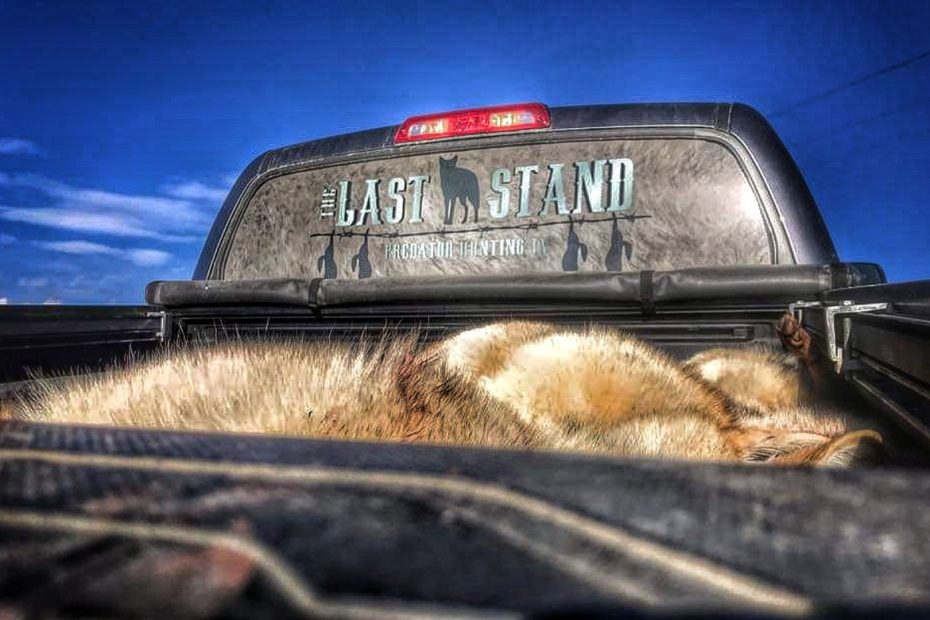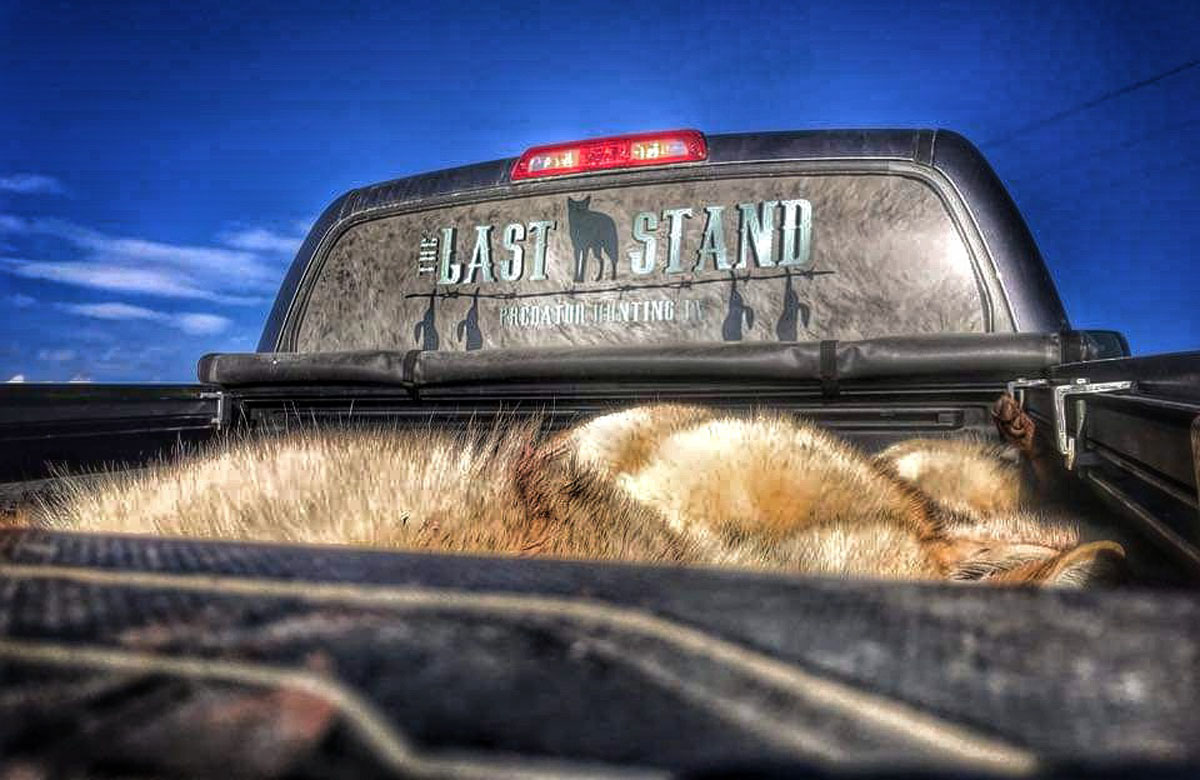Bagging 30 coyotes in a 2-day contest? Most would agree that a total that high is virtually impossible and as history has proven, they would be correct. Coyote hunters have only imagined killing that many in a 2-day, day-time only calling contest because it’s a feat that has never been accomplished. That was until the 2018 National Coyote Calling Championship took place earlier this fall in Rawlins, Wyoming. Although I don’t plan on giving away any earth-shattering coyote hunting secrets in this article, I do plan on giving you a play-by-play account of how those remarkable 2 days unfolded. As you’ll see, a combination of strategy, planning, skill, and luck all played an important role in us capturing the best 2nd place finish of all time!
For those that understand coyote hunting and all the variables involved, it’s easy to see why 30 coyotes in 2 days are hard to fathom. Arguably, coyotes are one of the most challenging animals to hunt due to their paranoid demeanor, heightened senses, speed, and target size. Being able to call in that many coyotes over a 2-day span is a feat in itself. Being able to finish the deal with a well-placed shot on that many coyotes offers a whole new challenge. Strategy and planning are essential for calling in the coyotes, skill and even a bit of luck are essential for putting those coyotes in the truck. If you’re unfamiliar with coyote hunting contests, they come in all shapes and sizes. They can be found from coast to coast and vary in length from 1-2 days. Some consist of daylight hunting only and others are made up of a combination of day and night hunting. Rules vary from contest to contest but in most cases, the coyotes must be called in and taken by only members of each team. Teams are generally made up of 2-4 members. Rules are enforced by a variety of means including polygraphs, questionnaires, and temperature checks. Many contests require teams to provide video clips taken on their cell phones of the coyotes being properly tagged after harvest with properly marked kill blocks or tags that are inserted into the coyote’s mouth.
The Contest
Here is a bit of specific info on the contest that is the subject of this article. The National Coyote Calling Championship contest is based out of Rawlins, Wyoming and is open to any team from anywhere. Teams are made up of 2 individuals and that team can travel to hunt anywhere they would like. Teams are responsible for lining up permission on the land they are planning to hunt unless they are planning to call coyotes on public land. Public land is open to everyone and a big draw to the Nationals based on the vast amount of BLM land within several hours of Rawlins. Once the hunt begins, both team members must hunt together out of the same vehicle. The use of aircraft to attend the pre-hunt check-in or to transport coyotes back to the day 2 check-in is prohibited. Harvesting coyotes through trapping, chasing, or the use of dogs are against the rules. Night hunting is prohibited and coyotes can only be taken during daylight hours of the 2-day contest. Once a coyote is harvested, one team member must use a cell phone to video the other team member placing the kill block into the mouth of the coyote. The kill block must be properly marked with the time of kill, day and team number. The videos are then presented to the tournament coordinator during the final check-in. Time stamps on the videos are verified to match the time written on the kill blocks. The videos also show proof that the coyote was killed during legal hunting hours of the contest. A mandatory pre-hunt check-in takes place Thursday evening in Rawlins. At this point, teams receive a rules briefing and their kill blocks. Once the meeting is over, teams are free to leave and head to the area where they plan to start their hunt on Friday morning. Teams are required to text a picture of their day 1 harvest to the tournament coordinator Friday evening and then teams have to be back in Rawlins by 6 pm on Saturday for the final check-in. Winners are determined by the team who harvests the most coyotes and ties are broken by the earliest combination of check-in times from Friday and Saturday.
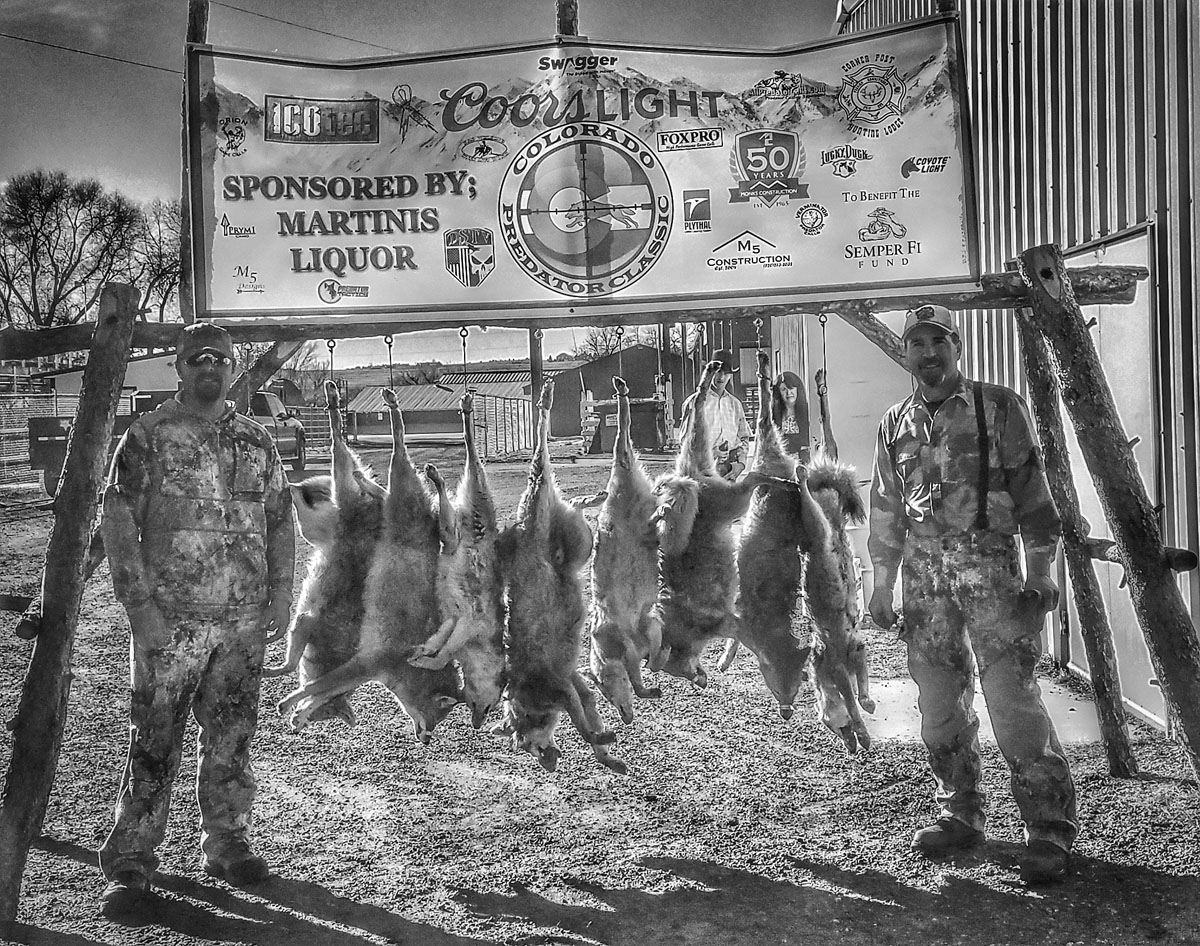
The Plan
When my partner, Wade Edis, and I decided to enter the contest in early September, the planning was already underway. Wade is no stranger to contest coyote hunting, having won the Midwest Coyote Calling Contest in 2013. Picking a partner that compliments you and your calling style is a huge advantage and Wade is no exception. We have a history of competing in contests together, winning the Colorado Predator Classic in 2017 and following it up with a 4th place finish in 2018. After evaluating our options, we decided to drive back and hunt Nebraska for the first day and then hunt in Wyoming for the second. After spending a day scouting each of these areas the week prior to the contest, we felt like our plan was solid. All we had to do at this point was hope the weatherman was accurate on his wind forecast and that the coyotes would respond to the call. As we set out from Rawlins on Thursday evening on our 4-hour drive back to Nebraska, we could only speculate on what was in store for us the next day.
Day 1
As the sun crept close to the horizon, the first coyote of the day was making its way across a hay meadow towards our position. Although it ended up swinging towards the downwind side several hundred yards, it presented me with a standing broadside shot and my bullet found its mark. The first and most important coyote of the contest was in the truck. After making a short drive, we headed into our second stand of the day just as the sun was breaking onto the landscape out in front of us. 4 minutes in, I squared the crosshairs upon the chest of the second coyote of the day and it folded up at 80 yards. As I rolled through a variety of coyote pup distress sounds for the next 6 minutes, the second coyote of the stand appeared to the left and stopped at the top of a small hill to investigate the sound. After a deep breath and a slow squeeze, coyote 3 of the day was dead before it hit the ground.
Excited about our exceptional start, we hiked our way into the third stand of the morning. As I looked up from the remote after pushing play, I instantly noticed a coyote standing on the hillside out in front of us. Shortly after, a second coyote stood up next to it. Within seconds, the first coyote starting closing the 350-yard gap and the second coyote cautiously followed at a distance. Wade was situated off to my right and downwind at the base of the big hill we were sitting on. A shelf halfway up the hill denied me visibility of exactly where he was sitting but it made for a great place to set up the ecall. As the lead coyote stopped out in front of Wade at 70 yards, I drew a bead on the second coyote standing 200 yards away. As several seconds past, I was surprised not to hear the report of his Daniel Defense and instead watched as the closest coyote continued coming to the call and disappeared underneath the shelf in the hill. I watch in amazement as Wade stood up, shouldered his rifle and pointed it at the coyote standing 15 yards to his right in the tall grass and sagebrush. In disbelief, the coyote continued to stand there watching Wade as he hastily racked several rounds through his rifle trying to get one to fire. As we later discovered, a dirty bolt leads to the failure of rounds seating properly. By this time, panic started to set in and luckily, the lead coyote cleared the crest of the hill behind Wade and offered me an opening for a shot. As the meat report echoed off the hillside, our focus quickly turned toward the second coyote. To our surprise, it was still standing out in front of us watching the circus that had just unfolded. After a quick adjustment to our shooting positions and a tag team shooting effort on the trotting coyote, we had scored on our second double in as many stands and our fourth and fifth coyotes of the day were in the truck.
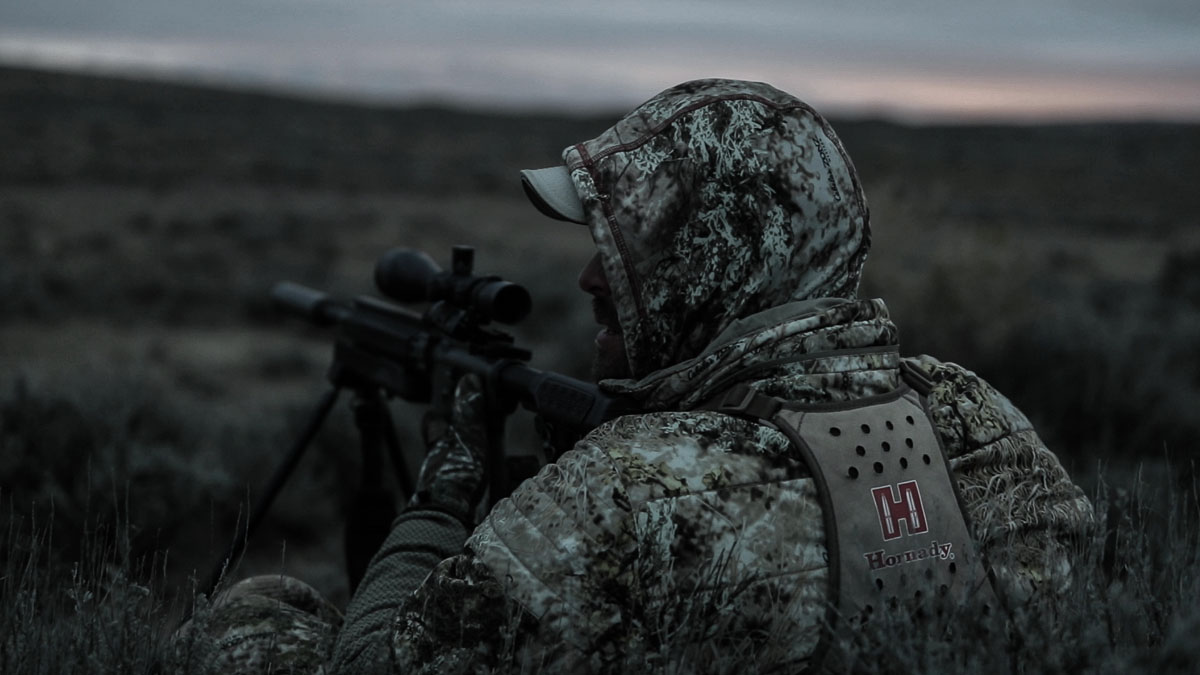
After our fourth stand of the morning came up empty, we continued grinding out stands as planned. Our fifth stand yielded yet another double as Wade made quick work of the 2 coyotes. The first one was on top of the Lucky Duck Revolt within 90 seconds and died as it stopped to take a look. The suppressed shot didn’t faze the second coyote as it came barreling up the hill towards us on the same path as the first. Wade folded the coyote just yards from its buddy and we had just added coyotes 6 and 7 to the pile. Stand 6 came up dry and on our way into stand 7, Wade made an excellent 150 yard running shot on a coyote we bumped. 8 coyotes in 7 stands and it wasn’t even 10 o’clock yet! As we continued to stay on pace with our plan for covering the area, stand 8 produced our first lost coyote of the contest. As the coyote checked up chest-on about 150 yards in front of Wade, the impact of the bullet tipped the coyote over and it rolled below the crest of the hill and out of sight. To Wade’s surprise, the coyote gathered itself from behind the small rise and started to run off. He was able to fire several quick shots off as it went streaking through a saddle in the hill chain 300 yards away but was unable to connect. We guessed the bullet caught the coyote left or right on one of its shoulders but none the less we shook off the only missed opportunity of the day and continued onward.
Stand 9 produced yet another double but more of the unconventional type. We had left the truck and were almost to the point where we were going to set up when Wade spotted a coyote trotting up the hill out in front of us several hundred yards away. I quickly dropped down to a knee, shouldered the Daniel Defense MK12 and squeezed off a shot just as the coyote stopped at the top of the hill to look back at us. The bullet found the vitals and as the coyote started into a death spin, Wade spotted a second coyote leaving that was one hill further out. The coyote disappeared briefly in a low spot but reappeared and stopped just as it got to the top of the hill. I made a quick guess on the range, held the crosshairs accordingly and touched off a round. My guess proved to be correct as the bullet impact was heard from 340 yards away. In a matter of 8 seconds, our fourth double of the morning was on the ground and coyotes 9 and 10 were in the truck.
After stands 10 and 11 came up empty, we grabbed a sandwich out of the cooler and headed to the other side of the ranch for our afternoon run. Shortly after we left stand 11, the wind made a 180-degree switch on us. This can be devastating for a game plan but luckily for us, the weatherman had predicted it in the forecast and we had incorporated this switch into our plan of attack for the day. Stand 12 produced coyote 11. The cautious pup only presented us with a 200-yard head shot but our confidence was high and the bullet found its mark. Stand 13 was dry but we managed to roll off 4 straight singles on stands 14 through 17. Our shooting continued to save the day as we made several shots out past 250 yards and one incredible 350 running shot. Our streak came to an end as stands 18 and 19 drew blanks. With 15 coyotes in the truck and the sun setting to the West, we hustled into our last stand of the day.
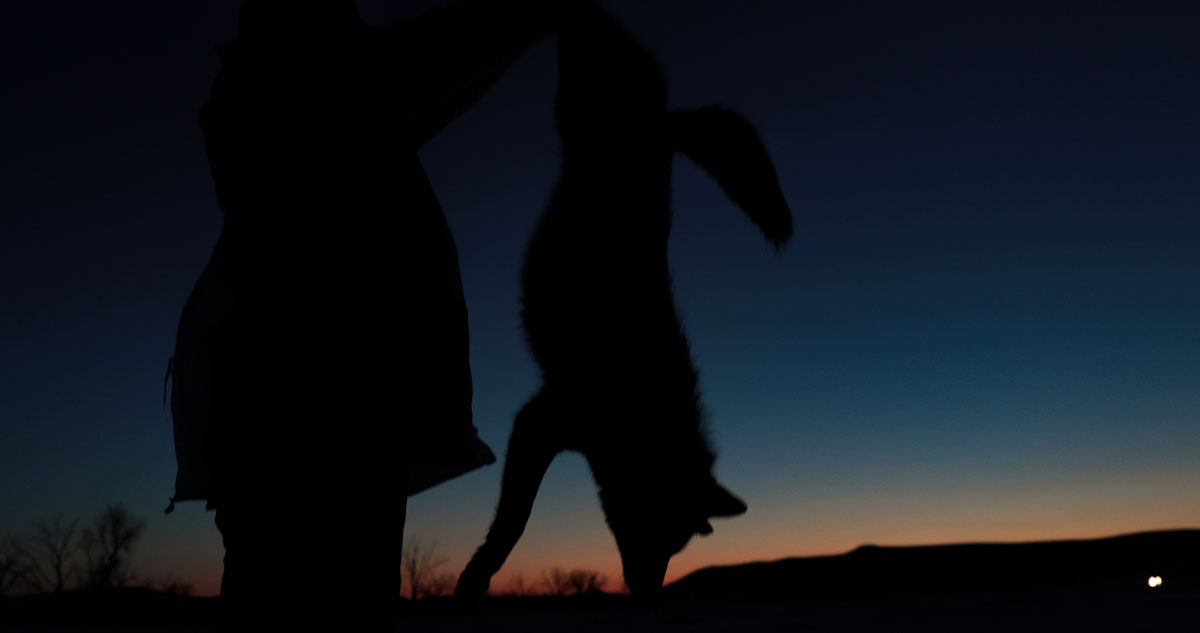
Several minutes in, I spotted a coyote making its way down off the hill out in front of us. Wade was sitting about 75 yards to my right and covering the downwind half of the stand. Judging the coyote’s approach angle, I knew it was only a matter of time before Wade would have a shot. As the coyote checked up to survey the area, the suppressed shot echoed through the draw and the coyote dropped dead in its tracks. With only a few minutes of shooting light left, I decided to get aggressive on the ecall in hopes of triggering a fast response from any coyotes off in the distance. As the coyote fight rang out through the hill chain, I suddenly noticed the silhouette of a coyote standing off to my left on the skyline across the draw. Just as I started to move my rifle to get into position, the coyote bolted off the hill on a dead run towards the ecall. I instantly picked up the movement of a second coyote paralleling the first down the hillside. In the blink of an eye, they closed the distance to under 50 yards. After failing to get either of the coyotes to stop, they wheeled around and began to leave as fast as they came in. I quickly adjusted my position and set my sights on the coyote to the left running across the bottom of the draw. My first shot found nothing but dirt but my second connected and the coyote rolled. A quick follow-up shot dispatched the coyote and I looked off to my right just in time to witness Wade cartwheel the second coyote as it streaked across the flat out in front of him. After exchanging excited fist pumps with Wade, I stood there admiring the sunset and the triple that was scattered out in front of us. We had just finished the most incredible day of coyote hunting either of us had ever experienced. 18 coyotes were in the truck and we had put ourselves in an excellent position to win the National Coyote Calling Championship!
Stay tuned for next month’s issue of Hunt 365 for the exciting conclusion to The Best 2nd Place Finish of All Time.
National Coyote Calling Championship: The Best 2nd Place Finish of All Time…Part 2 of 2
If you’d like to learn some tips and tactics Geoff uses while contest hunting, check out the video series he co-hosts called The Last Stand!
